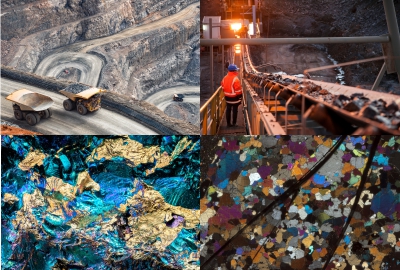As we transition to a green economy, a vast amount of critical and traditional metals will be needed to create new infrastructure. At U of T, we take an all-inclusive view of economic geology, tackling questions about how deposits form, how they can be found, and how the footprint of resource extraction should be managed:
 What critical metals can be found on the ocean floor and continents?
What critical metals can be found on the ocean floor and continents? - What can modern seafloor systems tell us about the tectonic placement of ancient metal deposits?
- How do critical metal deposits in sedimentary rocks form?
- What can sulfide chemistry tell us about ore deposit formation?
- How do orogenic gold deposits form?
- What are the origins of rare earth element deposits?
- How do we develop a sustainable lifecycle for resource extraction?
- What are the novel sources and targets for hydrogen, helium, and lithium?
- How can geophysical imaging techniques assist in the discovery of deeply buried mineral deposits?
- How can machine learning techniques and diverse geoscientific datasets be used to develop regional-scale mineral prospectivity maps?
- What can timing and rate of development of critical mineral deposits tell us about how they formed?
| Faculty | Areas of Interest |
|---|---|
| Melissa Anderson | economic geology, metallogeny, marine science |
| Neil Bennett | experimental petrology, element and isotope fractionation, planetary differentiation |
| Dan Gregory | hydrothermal ore systems |
| Sandra Kamo | radio-isotopic dating (geochronology), timing and rates of geologic processes, time scale issues, large igneous province events, impacts, mass extinction events |
| Barbara Sherwood Lollar | stable isotope geochemistry, hydrogeology |


